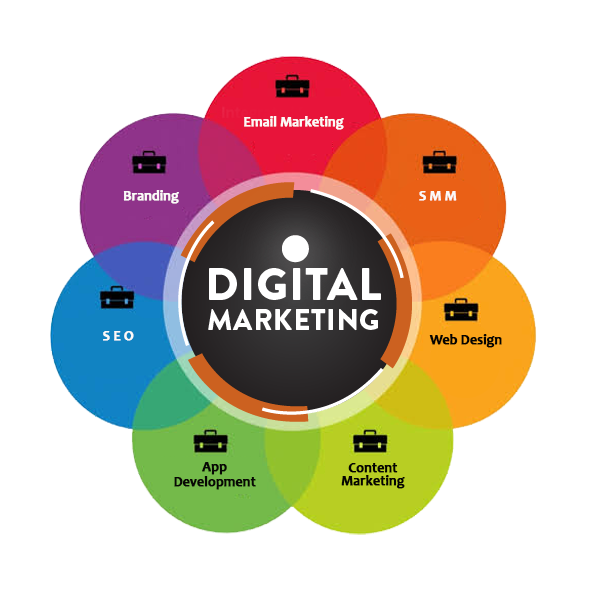Digital Marketing: A Modern Guide to Reaching Your Audience
Digital marketing has revolutionized the way businesses connect with their target audience. It encompasses a wide range of strategies and tactics that leverage digital channels to promote products, services, and brands. In today’s interconnected world, mastering digital marketing is essential for businesses of all sizes.
Key Components of Digital Marketing
- Search Engine Optimization (SEO):
- Optimizing website content and structure to improve its visibility in search engine results pages (SERPs).
- Keyword research, on-page optimization, link building, and technical SEO are key components.
- Pay-Per-Click (PPC) Advertising:
- Creating and managing paid ads that appear at the top or bottom of search engine results pages or on other websites.
- Google Ads and Bing Ads are popular PPC platforms.
- Content Marketing:
- Creating and sharing valuable, relevant, and consistent content to attract and retain customers.
- Blog posts, articles, videos, infographics, and social media posts are common forms of content.
- Social Media Marketing:
- Using social media platforms to build brand awareness, engage with customers, and drive traffic to your website.
- Popular platforms include Facebook, Instagram, Twitter, LinkedIn, and TikTok.
- Email Marketing:
- Sending targeted email campaigns to nurture leads and build customer relationships.
- Email newsletters, promotional emails, and automated email sequences are common tactics.
- Mobile Marketing:
- Optimizing websites and marketing campaigns for mobile devices.
- Mobile apps, SMS marketing, and location-based marketing are examples of mobile marketing strategies.
Benefits of Digital Marketing
- Measurable Results: Digital marketing provides detailed analytics, allowing you to track the performance of your campaigns and make data-driven decisions.
- Cost-Effective: Compared to traditional marketing methods, digital marketing can be more affordable, especially for small businesses.
- Targeted Reach: Digital marketing allows you to target specific demographics, interests, and behaviors, ensuring your message reaches the right audience.
- Flexibility: Digital marketing campaigns can be easily adjusted and updated based on performance and changing market conditions.
- Global Reach: With the internet, you can reach customers around the world without the need for physical locations.
Challenges and Best Practices
- Staying Updated: Digital marketing is constantly evolving. Stay informed about the latest trends and technologies to remain competitive.
- Measuring Success: Use key performance indicators (KPIs) to track the effectiveness of your digital marketing efforts.
- Creating High-Quality Content: Consistently produce valuable and engaging content that resonates with your target audience.
- Building Relationships: Foster relationships with your audience through social media engagement, personalized email marketing, and excellent customer service.
- Data-Driven Decision Making: Use analytics to analyze your performance and make data-driven decisions to improve your campaigns.
Conclusion:
Digital marketing has become an essential tool for businesses looking to reach their target audience and achieve their marketing goals. By effectively utilizing the various components of digital marketing, businesses can build brand awareness, generate leads, and drive sales in today’s competitive marketplace.


